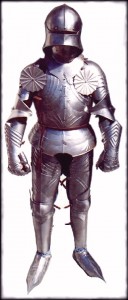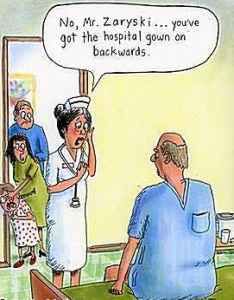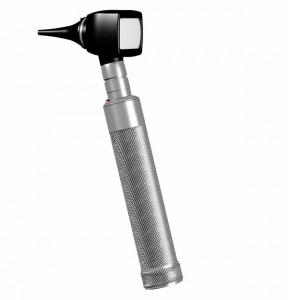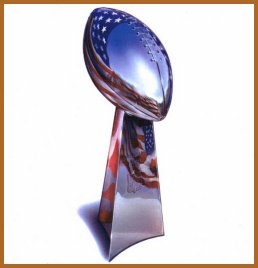by Your ER Doc on February 4, 2009

One thing that I learned as a resident in emergency medicine is that when a patient has cardiac arrest after a car crash, motorcycle crash or some other major trauma, those people are not going to do well.
In fact, it is rare for them to survive.
Of course, there are exceptions. One such patient was the victim of a high speed motorcycle crash into a large tree. When paramedics got to him, he was essentially dead. No pulse, no breathing. They got him intubated, started CPR, and headed toward the ER. Surprisingly, on arrival, he had regained a strong pulse and blood pressure. It was speculated that when he crashed, he was knocked unconscious, and because of how his body was positioned, he could not breath, perhaps because his face was against the ground, or something was pushing on his airway. Instead of developing cardiac arrest because of severe bleeding, head injury, etc, he had suffered a respiratory arrest, which was correctable. He ended up recovering, and proving there is always an exception to the rule.
by Your ER Doc on February 3, 2009
>
Welcome to another installment of the Top 10 Ways to Avoid the ER.
Number 3 – Dress for disaster
A couple years ago, I witnessed a motorcycle crash on the freeway. It was a young man, going about 70 mph, on a rainy day. He hit the brakes too hard, and the bike went down, and he ended up sliding along the freeway on his back for quite a ways, until he came to a gradual stop. Fortunately for him, he was wearing an elaborate safety suit, with full leathers, motorcycle boots, full face helmet, gloves, and a heavy padded jacket with reinforcement.

After he came to a stop, he stood up, and appeared uninjured. This is amazing. Granted, if he had slammed into something abruptly, the protective gear may not have completely saved him, but if he had been in shorts and flip flops, it would have been a complete disaster. For many activities, we should wear protective gear, including: mountain biking, skateboarding, skating, skiing, etc.
Just assume you’re going to crash, and think about how not fun it would be to have me picking gravel out of your skin with tweezers, and I think you’ll go for the gear.
by Your ER Doc on February 2, 2009
You know those hospital gowns we give people in the ER? You know how they are open on one side? Well, they are meant to be open in the back. To clarify, they are not supposed to be open in the front. Enough said.

by Your ER Doc on January 31, 2009
 Some people have a compulsion to steal items from the ER that have absolutely no utility to them. Perhaps the most commonly stolen item is the head of the otoscope. The otoscope is a device we use to look in people’s ears. It has a detachable head that has a light inside of it and when you look through it into the ear, you can check for ear infections, foreign bodies, and other things. When the head is removed from the holder (which is bolted to the wall), it doesn’t work. It is completely useless. Unfortunately, when the head has been stolen, the handle also is completely useless. I can’t tell you how many times I’ve wanted to examine a patient’s ears and looked up to realize that there was no head on the otoscope. I actually have considered faking the exam–just holding up the useless handle near their ear and saying “Yeah, looks pretty good all right!” Instead, I go to the nearest empty room (if there is one), cannabilize another otoscope head and bring it back, cursing the vile thief who is wasting our time and money.
Some people have a compulsion to steal items from the ER that have absolutely no utility to them. Perhaps the most commonly stolen item is the head of the otoscope. The otoscope is a device we use to look in people’s ears. It has a detachable head that has a light inside of it and when you look through it into the ear, you can check for ear infections, foreign bodies, and other things. When the head is removed from the holder (which is bolted to the wall), it doesn’t work. It is completely useless. Unfortunately, when the head has been stolen, the handle also is completely useless. I can’t tell you how many times I’ve wanted to examine a patient’s ears and looked up to realize that there was no head on the otoscope. I actually have considered faking the exam–just holding up the useless handle near their ear and saying “Yeah, looks pretty good all right!” Instead, I go to the nearest empty room (if there is one), cannabilize another otoscope head and bring it back, cursing the vile thief who is wasting our time and money.
Other favorite items to steal include: surgical lubrication, bandaids, tongue depressors, and sterile gloves. Once I walked into a hallway near the exit and found a woman “helping herself” to hospital towels, and about to head out to the parking lot. These are towels that are imprinted with the name of the hospital all over them. They would not look good in your bathroom. I stopped and asked the woman, who was about 70 years old, “Are you stealing those towels?” and she looked down at the floor and said, “Yeah, I guess I am.”
I said to her, “You know I’ve got an idea. Why don’t you leave them there for now. Who knows? We might need them.” She said okay, and hurried off. I think she needed to get home to dust her otoscope head collection.
by Your ER Doc on January 30, 2009
 It’s Superbowl weekend again, time for chips, dips, and brain injuries. Some will occur on the field, and others just from drinking too much and falling down.
It’s Superbowl weekend again, time for chips, dips, and brain injuries. Some will occur on the field, and others just from drinking too much and falling down.
We see a lot of head injury patients in the ER, many of them kids who play sports. The question always comes up, “when can he play football again?” Unfortunately, the answer is complicated. There are guidelines or course, and different systems for classification of concussion. Just about everyone agrees that patients should not return to sports until symptoms are gone (no headache, dizziness, amnesia, etc.).
However, many parents don’t seem aware of the fact that repeated head injury can cause permanent problems. Chronic traumatic encephalopathy (brain damage due to trauma) is frighteningly common in athletes who have a lot of head injuries. A recent study examined the brains of dead NFL players and found an alarming amount of brain damage, beyond what you would expect for age.
In boxers, brain damage due to repeated blows to the head is well known (dementia pugilistica). Famous examples of brain damage due to frequent head injuries include boxers Floyd Patterson, and Sugar Ray Robinson. By the way, Muhammed Ali didn’t have dementia pugilistica, just plain old Parkinsons disease. There have been 3 NFL players diagnosed after their deaths with chronic traumatic encephalopathy–Justin Strzelczyk who died in a car crash after a nervous breakdown, and Andre Waters and Terry Long who both committed suicide.
So if the question is, when can my kid play football again with no risk of permanent brain injury?
I’m afraid the answer is: never.













 Some people have a compulsion to steal items from the ER that have absolutely no utility to them. Perhaps the most commonly stolen item is the head of the otoscope. The otoscope is a device we use to look in people’s ears. It has a detachable head that has a light inside of it and when you look through it into the ear, you can check for
Some people have a compulsion to steal items from the ER that have absolutely no utility to them. Perhaps the most commonly stolen item is the head of the otoscope. The otoscope is a device we use to look in people’s ears. It has a detachable head that has a light inside of it and when you look through it into the ear, you can check for  It’s Superbowl weekend again, time for chips, dips, and brain injuries. Some will occur on the field, and others just from drinking too much and falling down.
It’s Superbowl weekend again, time for chips, dips, and brain injuries. Some will occur on the field, and others just from drinking too much and falling down.